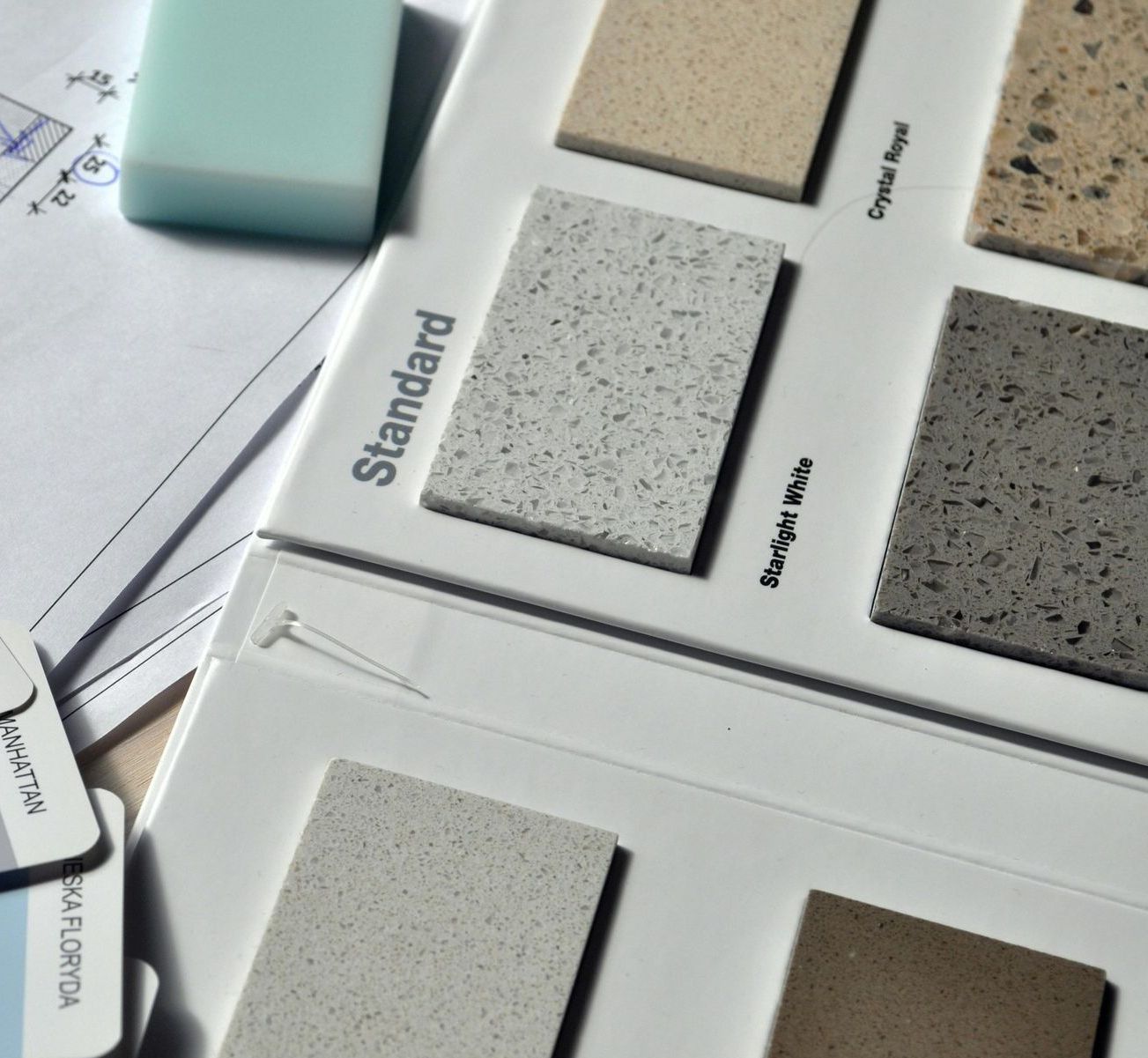Discover how we can bring your vision to life with precision and style.
TRUSTED SERVICE
Tile Flooring Installation
in River Falls, WI
We're here to bring your tile
flooring installation vision to life, ensuring every detail from material selection to the final laying is handled with care. Our team works closely with you to choose the best tile that fits your lifestyle and home's aesthetic. With precision cutting and expert laying techniques, we guarantee a finish that's not only beautiful but also built to last.


Preparing Your Space for Tile Installation
Getting your space ready for tile installation is a key step to ensure a smooth and successful flooring update. Here's what needs to be done:
- Clear the Area: Remove furniture and any other items from the installation space.
- Clean the Subfloor: Ensure the surface is clean, dry, and free of debris.
- Level the Floor: Check for and correct any uneven areas to prevent future cracking or lifting of tiles.
- Measure Accurately: Precise measurements are crucial for ordering the correct amount of tiles and materials.
- Acclimate Tiles: If necessary, allow tiles to adjust to the room's temperature and humidity levels to avoid expansion or contraction post-installation.
Choosing Your Ideal Tile Material
Selecting the right tile material is crucial for ensuring your new floor meets both your aesthetic and functional needs. Here's a guide to help you make the best choice:
Ceramic Tiles
Versatile and cost-effective, perfect for areas with moderate foot traffic.
Porcelain Tiles
Highly durable and moisture-resistant, ideal for kitchens and bathrooms.
Natural Stone Tiles
Offers a unique, upscale look with materials like marble, granite, and slate, suitable for luxury spaces.
Glass Tiles:
Adds a luminous quality to any room, best used for accents or backsplashes.
Vinyl Tiles
A practical, low-maintenance option that can mimic the look of more expensive materials.
Sealing and Grouting for Durability
- Sealing and grouting are critical steps in tile installation, enhancing both durability and appearance. After laying the tiles, we apply grout to fill the spaces, preventing moisture and debris from getting underneath. For certain tile types, a sealant is then applied, creating a protective barrier against stains and wear. This process ensures your tile flooring remains beautiful and resilient against daily use, maintaining its integrity and extending its lifespan.
Post-Installation Vinyl Floor Care
After your vinyl flooring installation, proper care will keep it looking beautiful and extend its lifespan. Here’s how to maintain your new floor:
- Regular Sweeping: Keep dirt and grit off the floor to prevent scratches.
- Mild Cleaning Solutions: Use gentle cleaners to avoid damaging the vinyl.
- Immediate Spill Cleanup: Prevent stains by wiping up spills as soon as they happen.
- Avoid Harsh Scrubbers: Use soft cloths or mops to clean without scratching.
- Furniture Protectors: Place pads under furniture legs to prevent indentations.
- Rinse Thoroughly: After cleaning, make sure no soap residue remains to maintain the shine.
Frequently Asked Questions
See some common questions and answers below or call us on (715) 821-2405.
-
How do I choose the right tile for different areas of my home?
Choosing the right tile involves considering both the functionality and aesthetics of each room. For areas exposed to water, like bathrooms and kitchens, opt for porcelain or glazed ceramic tiles due to their excellent water resistance. These materials prevent moisture penetration, reducing the risk of mold and ensuring durability. In living areas or bedrooms, natural stone tiles offer a luxurious and durable flooring option, enhancing the room's aesthetic appeal. However, it's crucial to consider the tile's slip resistance, especially in bathrooms or kitchens, to ensure safety. Textured tiles or those rated for slip resistance can provide extra safety in wet areas.
-
Can tile be installed over an existing floor?
Yes, tile can be installed over some existing flooring types, such as vinyl or linoleum, as long as the existing floor is in good condition, smooth, and free from moisture problems. This approach can save time and reduce installation costs. However, tiling over hardwood or carpeted floors is generally not recommended because of potential damage to the underlying floor and issues with moisture that can arise, leading to tile adhesion problems. Before proceeding, it's advisable to have a professional evaluate your specific situation to ensure the existing floor is suitable for a tile overlay, ensuring a successful and long-lasting installation.
-
What's the difference between sanded and unsanded grout?
The main difference between sanded and unsanded grout lies in the presence of fine sand particles in sanded grout, which adds strength and makes it ideal for filling wider grout lines (typically over 1/8 inch). This type of grout is less likely to shrink or crack, making it suitable for larger tile installations. Unsanded grout, lacking these sand particles, is smoother and better suited for narrower grout lines found in installations with delicate tiles such as glass or polished stone, where a sanded grout could potentially scratch the tile surface. Choosing the correct type of grout is essential for the durability and appearance of your tile installation.
-
How long after installation before I can walk on my new tile floor?
After installing new tile flooring, it's recommended to wait at least 24 hours before walking on it to allow the adhesive to properly set and bond with the tiles. If grouting has been done, it's advisable to wait an additional 24-72 hours before subjecting the floor to heavy use, ensuring the grout has fully cured and hardened. This waiting period helps prevent tiles from shifting out of place and ensures the grout lines remain intact, contributing to the overall longevity and appearance of your new floor.
-
How do I maintain my tile flooring to keep it looking new?
Regular maintenance is key to keeping your tile flooring looking its best. Start with routine sweeping or vacuuming to remove dirt and debris, which can scratch the tile surface over time. For deeper cleaning, mop the floor with a mild detergent and water, avoiding harsh chemicals that can damage the tiles or grout. Periodically sealing the grout lines can also help prevent staining and moisture penetration, especially in areas prone to spills. For natural stone tiles, use specific cleaners and sealants recommended for the type of stone to avoid damage and maintain the stone's natural beauty.
Transform Your Floors with Expert Tile Installation
Ready to upgrade your home with beautiful, durable tile flooring? Our team at Do It All Handyman Services is here to guide you through every step, from selecting the perfect materials to professional installation.
Handyman Services
Contact Information
Phone
Business Hours
All Rights Reserved | Do It All Handyman Services | Privacy Policy




